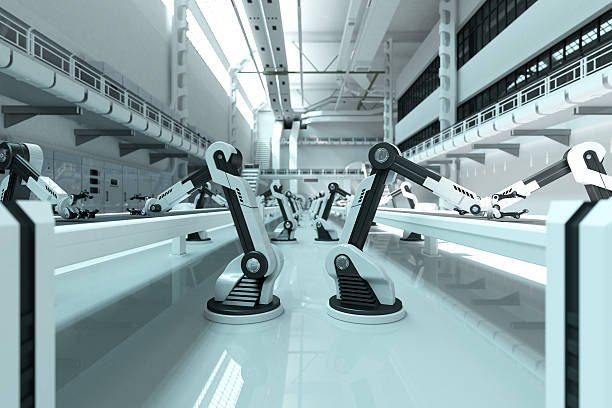As we head toward 2025, automation is no longer just a buzzword but a core driver of innovation in business. The relentless march of technological advancements, particularly in artificial intelligence (AI), machine learning (ML), robotics, and Internet of Things (IoT) devices, is reshaping industries across the globe. From improving efficiency and reducing operational costs to enhancing customer experiences, the rise of automation is revolutionizing how businesses operate and deliver value.
In this article, we explore the key business trends for 2025 that are fueled by automation and how companies are leveraging this transformative force to stay competitive, boost productivity, and future-proof their operations.
1. AI and Machine Learning: The Core of Business Automation

At the heart of automation in 2025 lies artificial intelligence (AI) and machine learning (ML). AI and ML are being increasingly integrated into various business processes, from data analysis and customer service to decision-making and supply chain management. These technologies enable businesses to automate complex tasks that were traditionally handled by humans, freeing up valuable resources for more strategic initiatives.
AI-driven automation systems are poised to handle tasks like predictive analytics, natural language processing, and personalized marketing, enhancing efficiency and precision. By using data to make decisions and predict trends, AI is becoming a trusted partner in driving business growth.
Key Applications of AI in Automation:
- Customer Support: Chatbots and virtual assistants powered by AI are revolutionizing customer service, providing 24/7 assistance and resolving issues with high accuracy and speed.
- Predictive Analytics: Machine learning algorithms will enable businesses to forecast demand, optimize inventory, and identify opportunities, minimizing risks and maximizing profits.
- Personalized Marketing: AI allows companies to deliver highly personalized experiences to customers by analyzing browsing behavior, purchase history, and demographic data.
2. Robotic Process Automation (RPA): Streamlining Repetitive Tasks
Robotic Process Automation (RPA) is gaining immense traction in 2025 as companies seek to automate routine and time-consuming tasks. RPA tools use software robots or “bots” to execute repetitive tasks such as data entry, invoice processing, payroll management, and report generation. These bots are capable of working tirelessly without errors, resulting in significant time and cost savings.
By automating these processes, businesses can reduce the workload of human employees, allowing them to focus on higher-value activities, such as problem-solving, innovation, and strategy. As RPA continues to mature, more organizations will integrate it with other technologies, such as AI, for even greater efficiency.
Key Benefits of RPA for Businesses:
- Increased Efficiency: RPA eliminates the need for human intervention in repetitive tasks, significantly improving operational efficiency.
- Error Reduction: By automating processes, businesses can eliminate human errors and ensure greater accuracy in data handling.
- Cost Savings: Automation leads to substantial cost savings as businesses can reduce manual labor, reallocate resources, and streamline operations.
3. Autonomous Systems and Robotics: Transforming Manufacturing and Logistics

Automation is revolutionizing the manufacturing and logistics sectors through the use of autonomous robots, drones, and vehicles. By 2025, industries like manufacturing, warehousing, and supply chain management will see greater reliance on autonomous systems to increase productivity and reduce costs.
In manufacturing, robots are already performing tasks like assembly, quality control, and material handling with high precision. In logistics, autonomous drones and self-driving vehicles will transport goods, reducing delivery times and optimizing routes. These innovations are set to improve both the speed and accuracy of operations.
Key Trends in Autonomous Systems:
- Autonomous Vehicles: Self-driving trucks and drones will enable faster and more cost-effective delivery of goods, reshaping the supply chain landscape.
- Collaborative Robots (Cobots): Cobots, designed to work alongside human workers, will become more common in factories, enhancing productivity while maintaining safety and efficiency.
- Smart Warehouses: Automation will be used to optimize warehouse operations, including sorting, picking, and packaging, with minimal human intervention.
4. Automation in Human Resources: Enhancing Recruitment and Employee Management
The rise of automation is also making its mark in the realm of human resources (HR). In 2025, more companies will utilize AI and automation tools to streamline recruitment, onboarding, and employee management processes. Automated systems will help HR teams reduce bias, identify the best talent, and provide a more personalized experience for employees.
For instance, AI-powered recruitment platforms can scan resumes, conduct initial interviews, and rank candidates based on skills and qualifications, significantly speeding up the hiring process. Additionally, AI-driven employee management systems will help track performance, predict workforce needs, and offer personalized career development programs.
HR Automation Trends:
- AI Recruitment Tools: AI will help HR departments automate candidate screening, reducing time and cost while improving hiring accuracy.
- Employee Engagement: Automated platforms will help track employee engagement levels, gather feedback, and suggest actions to improve satisfaction and retention.
- Predictive Analytics in Workforce Planning: AI-driven systems will predict staffing needs based on historical data, helping businesses optimize their workforce.
5. Automation in Customer Experience: Enhancing Personalization
In 2025, automation will be key to delivering highly personalized customer experiences. As consumers continue to demand more tailored interactions, businesses will turn to AI, chatbots, and automation tools to provide real-time, customized solutions. From marketing to customer service, automation will empower companies to engage with customers on a more personal level.
For instance, AI chatbots will provide instant customer support, handling queries, processing orders, and even suggesting products based on past behavior. In marketing, automation will allow businesses to send targeted messages and recommendations, increasing conversion rates and customer satisfaction.
Key Customer Experience Automation Trends:
- AI-Powered Chatbots: More businesses will implement chatbots for handling customer inquiries and providing real-time support.
- Automated Marketing Campaigns: AI will enable businesses to automate marketing efforts, sending personalized messages and product recommendations based on consumer behavior.
- Omnichannel Automation: Customers will experience seamless service across multiple channels (email, social media, phone, etc.) thanks to integrated automation tools.
6. Automation in Financial Services: Risk Management and Fraud Detection

The financial services industry is embracing automation to enhance decision-making, reduce operational risks, and improve security. By 2025, AI and automation will be critical in automating financial processes, including fraud detection, risk analysis, and customer service. These tools will help financial institutions identify potential risks faster and make more informed decisions.
Robotic process automation (RPA) will also be widely used in financial institutions to automate administrative tasks such as transaction processing, compliance reporting, and account reconciliations. This will allow financial professionals to focus on high-value activities such as advisory services and strategic decision-making.
Financial Services Automation Trends:
- AI Fraud Detection: Machine learning algorithms will detect fraudulent activities by analyzing transaction patterns and flagging unusual behavior.
- Automated Compliance: Automation tools will help financial institutions stay compliant with regulatory requirements by automatically generating reports and monitoring changes in legislation.
- RPA in Banking Operations: RPA will help automate routine banking tasks like loan processing, account management, and transaction tracking.
7. The Future of Automation: Integration and Adaptation
By 2025, businesses will be fully integrating automation across multiple departments, creating a more interconnected and efficient ecosystem. The future of automation is not just about adopting individual technologies, but about integrating them to create smart, seamless workflows that operate across all areas of a business. The ability to adapt and scale automation solutions will be critical for businesses looking to stay competitive in an increasingly digital world.
Future Integration Trends:
- Cross-Platform Automation: Businesses will use cloud-based platforms to integrate AI, RPA, and other automation tools, allowing data and processes to flow seamlessly between departments.
- Adaptive Automation Solutions: As automation tools continue to evolve, businesses will have access to more adaptable solutions that can grow with their needs, scaling across operations as required.
Conclusion: Embracing the Future of Automation
The rise of automation is revolutionizing how businesses operate, enabling organizations to increase efficiency, reduce costs, and deliver more personalized experiences. From AI and machine learning to robotics and automated HR systems, the automation trends shaping 2025 are set to transform industries across the globe. Companies that embrace these innovations will be better equipped to stay competitive, while those who fail to adopt automation risk falling behind.
In the future, automation will not just be a tool for improving productivity but a fundamental driver of business growth and innovation. By embracing automation, businesses can unlock new opportunities, deliver superior customer experiences, and future-proof their operations for years to come.





No Comment! Be the first one.